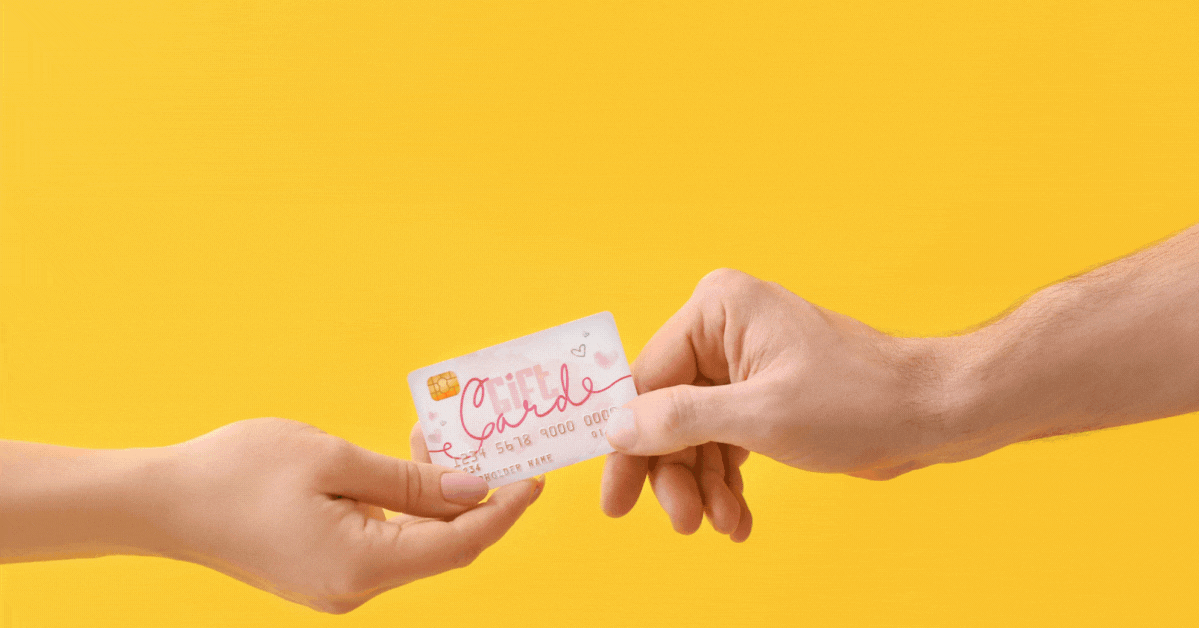By Kristie Atkins, Think Wink Pty Ltd

You’ve made the decision and can find the budget.
It’s time for your loyalty reward, marketing incentive, customer or staff thank you campaign. Or perhaps you’re designing a full-blown rewards portfolio for your all new and shiny loyalty program.
What to choose? Traditionally we have heard about food, fuel, grocery, department store, fashion, home, cinema, restaurant, spa (and usually in that order). Sound familiar?
Yet before diving in, have you thought about the geographic, behavioural, demographic and psychographic factors driving your customers and what they want?
For a moment, let’s pretend we’re running an energy company, wanting to reward customers for their loyalty:
- Geographic – where does the customer live? Are they in an urban or a rural location? Someone residing in the country may not appreciate an invitation to an event dozens of miles away in the city. What region or electorate are they in? Are there different rules around rewards choices and rewards eligibility in their location?
- Demographic – Have you considered age and life stage? If it’s a young family and mum or dad are home with children aged two to five, how realistic is it that they will want to be going out on a Friday night in the city? What do you know about their occupation and their socio-economic group? Two for one drinks at a VIP cocktail lounge might sound good in theory but if they work nights and are on a tight budget, the offer may drive “disloyalty”.
- Behavioural – Your customer might be actively seeking household savings due to a large mortgage. Consider their rate of use of your product or service, the kind of benefits they are seeking from it, their propensity to keep buying and their loyalty status.
- Psychographic – Is your customer one that prefers or is considering green energy plans? What does that kind of attitude or personality tell you about their lifestyle? How can those factors help you better shape your reward choices?
Below we dig into the drivers in some more detail plus tackle emerging new factors increasingly impacting reward choices.

- More than anything, make incentives accessible. It’s likely your customers live in all kinds of areas. Don’t presume if you give them a gift card for a fashion store that the brand has a location in their neighbourhood. At a minimum, enable online as well as offline redemption so that people without a store nearby can still take advantage;
- Contactless solutions, particularly those delivered via mobile, have never been more popular. Rewards that can’t be easily redeemed are a big turn-off. The frustration can be enough that customers opt out of your communications or worse, stop buying from you entirely;
COVID-19 has dramatically increased support back to the “local”. More people are working at home more often and tapping into services nearby; - If using gift cards, pick from cash-based or those built with wide redemption networks rather than specific retailer products;
- If cost of delivery is not an issue, “old fashion” home delivered physical gifts can resonate strongly. Think about the wow you get when the door rings and a bunch of flowers is delivered. The “feel good” vibe is as important as the nature of the actual reward item.

Over the years, rewards have been offered to incentivise people to change. For example, to stop smoking, do more exercise, comply with regulations or make donations;
- Tread a little carefully in making your choices. Don’t presume to know too much about what your customers want unless you have data to back it up. A vegetarian may not appreciate your gesture of an opening night invitation to a new meat restaurant;
- Think about whether a “one size fits all” approach is best for your audience and less risky for you. If we return to our energy example, you can assume most household and business customers have at least some focus on reducing costs, prompting them to ask, “why are you giving me a gift rather than just reducing what you charge?”
- Consider “choose your reward” or swap cards (custom branded physical or digital cards that can be exchanged for a retailer gift card of the recipient’s choice) as suitable mechanics. You can elect the suite of options from which they choose, feeling comfortable there is something for everyone.

- You know what your customers are buying from you. Match incentives and rewards directly to the kind of service that they are seeking;
- Provide cashbacks in lieu of up-front discounts and free trials so that customers have at least stayed with you for an initial period to get them into the mindset of paying;
- In our energy example, give those customers with a preference for green plans, a green reward such as a living gift (think plants and similar) or a digital gift card (“no plastic”) with a green brand message;
- Movers will love a grocery card, a card for home related services or even some branded digital cash;
- For first home buyers, choose digital rewards that are easy to redeem and represent a good saving on things they love such as music, fashion and going out. They’re the things that will feel like more of a luxury when they are paying off a mortgage.

Choosing what people want based on gender has become a lot more blurred but age is still a key distinguishing factor. Key audience groups to consider include:
18 to 24:
- Leaving home for the first-time, first-time renting, first home buyer, completing studies, getting into their first job, travel (pandemic impact aside);
- They want to be treated like “me”, not just any other customer so personalisation and the way in which rewards are received and redeemed are priorities.
- Gamify, send them to their mobile, communicate with them in their language and make the experience frictionless;
- Invisible redemption mechanisms are best. Some 80% of millennials won’t buy if they can’t access a retail cashback, don’t have a gift card, coupon or offer to use;
- Social media is a default mode of communication so ensure rewards and incentives are shareable, even if just to make them look good;
- We recommend choosing cash, fashion, fast food, music and experiences.
25 to 44:
- They’re contending with things like a mortgage, young children, juggling work and home life;
- Clear popular reward choices include branded digital cash, home and home related products, grocery gift cards, activities that will keep the kids entertained or bring the family together (such as the cinema, amusement centres, shopping for kids clothes and gifts etc.);
- Traditionally, air miles have also worked nicely for this segment. They’re often either first-time corporate travellers (who still think work travel is a bit glamourous) or see the accrual of frequent flyer points as a personal saving they can use for themselves at a later time.
45 to 64:
- Increased disposable income with less worry about children, a higher level of home ownership and becoming empty nesters, this group is in the mindset of “it’s time to do some nice things for me”;
- Most popular rewards options include home related products, access to online shopping offers and discounts, department store gift cards and VIP shopping experiences;
- Generally fashion choices for mid-range to premium men’s and women’s brands work nicely. This is a group getting into the next phase of their life, often reflected in what they choose to wear;
- Think about eating out and entertainment with a more premium flavour. Choose sit down restaurants, upgraded / premium cinema experiences, live shows and similar.
65 and over:
- There is more time to enjoy life, for travel, retirement, downsizing and a need to make decisions about future care requirements;
- Think about reward choices for places to go during the day such as coffee / café experiences, coffee machines, coffee vouchers, restaurants, cinemas, shopping centres and department stores;
- Often there is more time for relaxation at home so think about home gift cards, home related products, home services, garden and gardening related goods and services;
- This is an audience with more time and more savings, so pre-pandemic travel products, travel services, hotel, travel and airline gift cards were a good choice. No doubt they will be again.

- This attitude is driving the emergence of a whole new key new customer segment with a different set of expectations;
- In particular, millennials have an overwhelming expectation for brands to have a purpose beyond profit. Some 80% prefer to buy from a company with a social purpose and three-quarters are proud to be customers of that kind of business;
- As a result of the pandemic and debate around issues such as climate change, these values are also spreading to other customer segments;
- Consider options like allowing recipients to donate cash rewards to a charity or choose a cause to which they can contribute their choice of reward;
- Green themes also resonate strongly. Deliver rewards digitally, pick physical living gift items like plants or outdoors / nature-based activities and experiences.

- If the pandemic has taught us one thing, it’s that home is where the heart is;
- Never before have we seen so much demand for and redemption of rewards and incentives that are about home improvement and the home environment. The demand for these products is outstripping traditional popular choices like cinema, concerts, restaurants, pamper and spa days by more than three or four to one;
- Our own health and wellbeing, together with that of close friends and family, has never been at the forefront of our minds more. Choose gifts and experiences that make the home environment even more special, more nurturing and that bring families together;
- Don’t forget the famous “lipstick effect”. Traditionally nothing has been more disruption proof than lipstick, so remember reward choices that represent life’s little luxuries such as cosmetics;
- There is a lot of pent-up demand. For everyone who’s done it tough over the past few years, there are a lot of people who have been squirrelling away more money, not going out or travelling as much. Those air miles, hotels, cinemas and restaurant choices will come back strongly and maybe in an even greater way than before.




